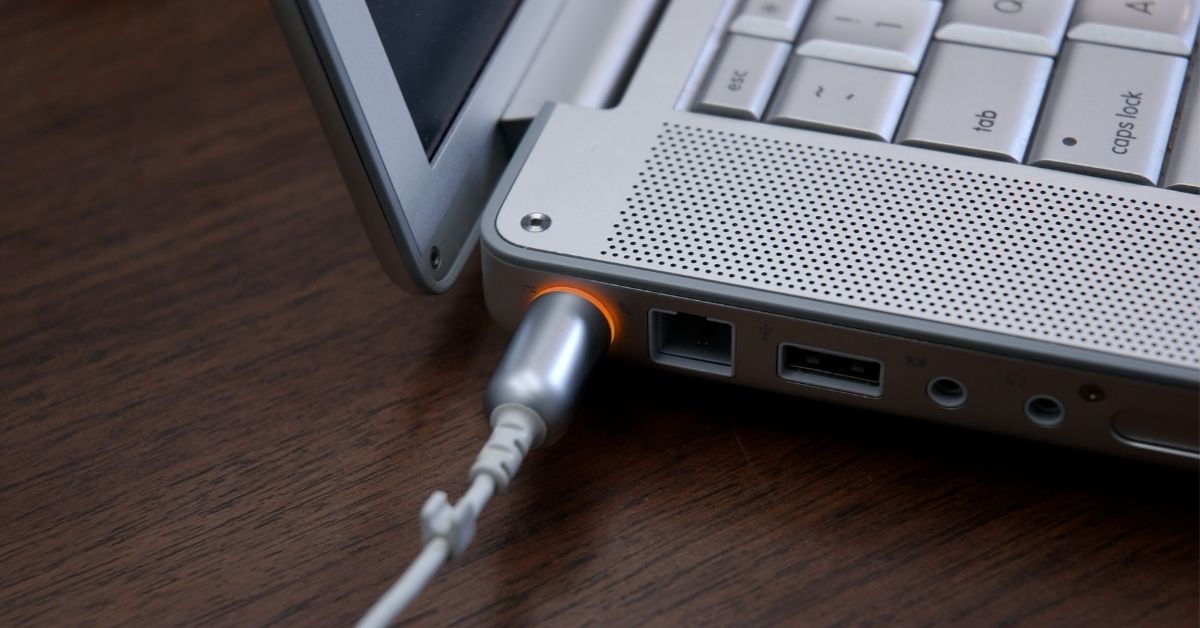
Usually the power factor is not a concern, but if your electrical circuit involves heavy capacitive or, more likely, inductive loads (motors, etc.), the actual power going to the brick might be less than it expects. The phase of the current also is very important. Voltage isn't the only parameter in AC-DC conversion. But if your wall socket voltage is actually, say, 216V, then it may well happen that the resulting DC voltage falls below minimum tolerance. Usually laptop power bricks apply an AC-DC conversion method that, when supplied with AC in the 220-240 V range, outputs DC in the 18.5 - 20.2 V range. Only very high-end, usually multipurpose, adapters will output a precisely tuned voltage.

The power brick isn't usually producing, say, "19V". It's not even guaranteed that a single cause is responsible. That said, there can be several causes for that one phenomenon. There is no other phenomenon that can reasonably be going on between the two cases "laptop on" and "laptop off". What seems to be happening here is that when the PC is draining current, the power brick voltage falls below what's required by the battery controller to safely charge the battery. This is probably not happening to you, because HP doesn't seem to employ such strategies, but I'm including it just in case.

If something interferes with the protocol, the charging process might be hindered. The laptop can then actually refuse to charge, or charge more slowly, or not charge unless the laptop is powered down and the identification chip asleep, if it feels that the charger isn't its manufacturer-ordained soul-mate. This is also related to the waste heat being produced by the power brick.įinally, some laptops (and some chargers) can actually communicate and identify one another. Then, power units have a maximum wattage, and usually they have a "power curve" so that the actual voltage they give out is not always the rating voltage, but a little more (when nothing is plugged in) or a little less (if something is draining power). Charging at different voltages or with different currents might damage the battery or shorten its expected life, so the battery controller will simply not allow it and disconnect the recharge circuit.

Lithium-Ion batteries require a specific current and voltage to properly charge (actually different levels depending on the specific charge profile: they're charged at constant current up to about 80% capacity, then charged at constant voltage the rest of the way).


 0 kommentar(er)
0 kommentar(er)
